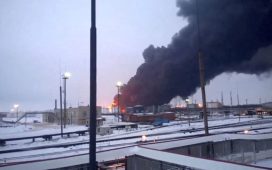South Texas Electric Cooperative’s Red Gate power plant, which uses Wärtsilä flexible engine … [+]
Wartsila
Word out of the nation’s capitol on Friday is that efforts by West Virginia Senator Joe Manchin to convince his fellow Democrats to push a revised energy plan that will make room for more contributions from natural gas in power generation are bearing fruit. Manchin has apparently succeeded in killing the so-called Clean Electricity Performance Plan (CEPP) that would have heavily restricted the building of new natural gas generation capacity and forced utilities to move instead to intermittent sources like wind and solar.
“Utilities are already under tremendous pressure to green their fleet, but (without CEPP) it allows power companies who are seeking to reducing carbon a more diverse portfolio, which benefits gas,” said Scott Segal, a Washington energy attorney.
A recent study conducted by energy technology company Wärtsilä indicates that leaving more room for a diverse portfolio of generating capacity, including natural gas, in the nation’s future energy grid is a good thing, especially if the government plans to continue to heavily subsidize the building of more intermittent renewable energy. Intermittent energy must be backed up by reliable, dispatchable power plants that can quickly be up and running when the wind stops blowing or the sun isn’t shining. Wärtsilä confirms that that role is best filled in the near term by combined cycle natural gas plants.
Titled “Front-Loading Net Zero,” Wärtsilä’s study focuses in part on the California power system and notes that it must grow by 50% in the coming years – from 280 TWh to 420 TWh – to achieve carbon neutrality. Based on the company’s modeling, the authors conclude that “hitting 100% RPS in 2045, which is the current plan for California, would cost an extra $14 billion due to increasing carbon taxes. Reaching these goals 5 years faster would save the state 5 percent more on electricity costs.”
Wärtsilä strongly advocates that California continue to aggressively subsidize and mandate the building of more and more wind and solar capacity. But it also emphasizes the reality that utility companies must also continue to add battery storage and thermal generation that is capable of being quickly started and stopped in response to changing conditions. Right now, that thermal “flexibility” is best provided by natural gas.
Sushil Purohit, President of Wärtsilä Energy, told me in an email that “…the best solution is to add battery storage and flexible thermal generation that allows for taking the renewable share close to 90% or so, and then the final move is to convert those gas plants to use green hydrogen-based fuels (or whichever fuel of the future wins the market). The power plants will run at low capacity factors around 5% of the time so they do not use a lot of expensive green fuels but provide the security of supply which you could otherwise only reach by massive overbuilding of solar, wind and battery storage. Such a system produces electricity with a cost almost 3 times higher than the optimal, and both emit the same amount of carbon: zero.”
Purohit notes that allowing for flexibility is a vital factor in mitigating rising utility costs and avoiding blackouts. “The problem we are seeing currently is that renewables are added to the power system without adequate complementary resources to provide flexibility to the system,” he said. “This results in inefficient utilisation of renewables as the system cannot accommodate all the generation. To overcome this problem, traditional baseload resources need to be replaced by adequate amounts of flexible, firm dispatchable capacity, and renewables. Together they form “renewable baseload” that is affordable and reliable as traditional base load, but also has low, zero or net-zero CO2 emissions.”
Indeed, the company’s modeling indicates that, if managed correctly, the move to a net-zero power generation mix need not result in dramatically higher utility bills that Californians have paid in recent years. “California’s system must be able to integrate renewable capacity through flexible capacity to complement the renewable resources,” Purohit contends. “This will unlock significant electricity cost reductions as new wind and solar PV capacity is added and inflexible capacity is allowed to retire. These cost savings are due to the significant reduction in operational expenditures compared to traditional fossil fuel-based power generation (i.e. lower fuel costs) and leaner, more efficient fleet.”
Wärtsilä’s modeling indicates that maintaining adequate flexibility in the fleet is the key. California’s “…existing fleet lacks sufficient flexibility to integrate renewable energy,” Purohit said when I asked about the mistakes made by California policy makers that have led to high utility bills in recent years. “The end result of that inflexibility will be more renewable curtailment (meaning lost or wasted energy), maintaining and adding more capacity than is needed, and even much higher costs created by carbon emissions. An optimally designed flexible fleet can provide reliable service while maintaining the minimal amount of capacity, energy, and carbon costs.”
The over-arching narrative being pushed by the climate alarm lobby has been that all use of fossil fuels of any kind is bad and must be willy-nilly eliminated, regardless of the cost. That was the underlying basis for the CEPP proposal.
Wärtsilä is very much a proponent of the continued subsidization and expansion of renewable energy – that is made obvious throughout its report and in Purohit’s responses to my questions. But its modeling shows that the world is not quite so simple as “renewables good, fossil fuels bad,” and that natural gas has a very real role to play as states like California attempt to move their power grids to a net-zero profile.








